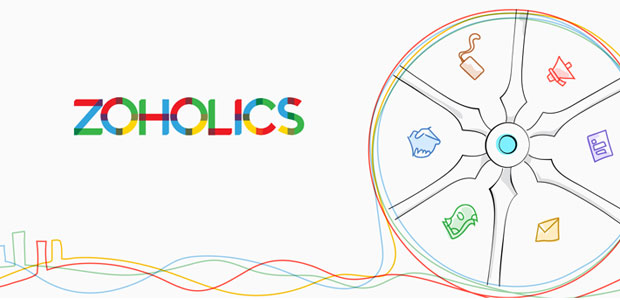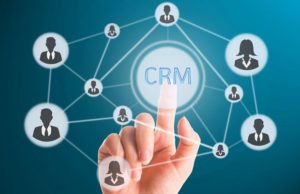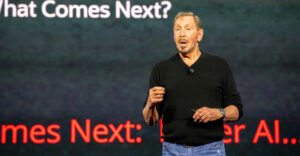Customer relationship management keeps expanding, and some people might wonder why we never seem to get all the way to some mythical goal of perfection. One of the chief reasons is that the goal posts are moving away from us and always will be. This isn’t some plot by the software companies to drive demand. From what I’ve seen, most companies simply try to keep up with demand with increasingly diverse products that meet real market needs.
A related issue for CRM is the “luxury trap,” according to Yuval Noah Harari, author of Sapiens: A Brief History of Humankind.
“One of history’s few iron laws is that luxuries tend to become necessities and to spawn new obligations,” he observed.
It’s another way of saying that disruptive innovation drives the economy. When a disruption is successful, everyone needs it, and commoditization is inevitable.
Infinite Store Shelf
A classic example in our day has been the infinite store shelf. I bet you were thinking I’d go elsewhere with this, but really, the infinite store shelf, pioneered by Amazon, has turned the software world upside down.
When the infinite store shelf was launched, the systems that were in place to manage real inventory and sales became totally inadequate. It wasn’t due to the immediacy brought by cloud computing, either. The cloud was a straight commoditization of IT and very different from infinite store shelves, though they have a common origin.
Initially seen as an unalloyed good, the infinite store shelf quickly presented serious challenges — both to software vendors and to customers — that we are still grappling with. For instance, with so much on offer, how does a customer know where to start? The plethora of goods on offer also challenged the vendor to understand the customer so that it could make sensible recommendations or risk abandonment.
So, the necessity of having an infinite store shelf approach to our markets spawned the need for artificial intelligence, machine learning and commerce systems, and an obligation to provide them. They’re at the heart of the digital disruption and central to most CRM and enterprise resource planning vendors’ market outreach. They also have become necessities — and with that, price sensitivity has set in.
Zoholics 2019
This is a good introduction to the significance of Zoho and its global surge punctuated by its Zoholics user event, which took place this week in Austin, Texas. Even if you discount the company’s 39 percent year-over-year revenue growth rate (which would be foolish), there’s enough going on otherwise for CRM watchers to take notice.
Although the company has been in the U.S. market for many years, it seems to have flown under many radars. After 22 years, it’s still a private company, content to be that way.
“Without the pressures of shareholders, we can grow with purpose,” said Sridhar Vembu, CEO and founder of Zoho. “It is our imperative to invest in our employees and the communities we are in, while making sure our software remains accessible to every type of business, from small to large, whether they exist in yet-to-be-developed, emerging or fully developed markets.”
Despite its old school approach to bootstrapping its growth, the business isn’t short of capital, as demonstrated by its more than 7,000 employees worldwide across 12 offices spanning five continents. Its user base is comprised of 45 million users in more than 180 countries.
Latest Announcements
Zoho, as much as any other enterprise software vendor, is all about spreading the benefits necessitated by our obligation to the infinite store shelf. Like many other CRM vendors, Zoho built a core technology suite based on the same platform.
However, the suite also includes many apps that look more like ERP and office automation solutions. They’re a good match for smaller customers around the world that need big time solutions without big time prices, as well as the reason Zoho calls its product line “the operating system for business.”
This week the focus is decidedly on commerce, marketing and AI, which is in line with current market demand driven by the infinite store shelf, but with an important difference. Zoho delivers solutions for all sizes of companies, but especially for those that may feel they paid too much without receiving the value they wanted in the past.
Key to understanding Zoho is that it’s old school in more than its financing. True, it doesn’t take outside capital, but it also doesn’t buy outside companies for their technology. It builds everything it sells, with the result that everything is highly integrated. And get this — it has its own university where people go right out of high school to learn IT and business. “The Zoho way” is a term in wide use within the company.
Commerce Plus
Just announced, Commerce Plus is built on Zoho One, the operating system for business. Commerce Plus brings together all the parts of commerce, from sales fulfillment to customer loyalty. In addition to the Zoho customer e-commerce experience, Commerce Plus leverages Zoho finance, analytics and intelligence apps, all of which support the infinite store shelf approach to business, including quick setup and cross-channel business process support.
In line with the single platform philosophy, Commerce Plus also inherits all the AI capabilities from Zoho One. Zia, Ask Zia, Zia Voice and Zia Search (named after its expert assistant Zia) are available throughout the platform.
Marketing Platform
At Zoholics in Austin, Zoho also introduced a marketing platform, Zoho MarketingHub. It integrates with a number of Zoho apps, including Zoho CRM, Zoho Campaigns, Zoho Sites, Zoho Survey, Zoho Backstage and Zoho Social.
FYI, Zoho Backstage is a presentation service that easily can access company data for direct presentation. That’s just one example of the company’s office automation solutions.
Zoho has been trying hard to demonstrate a full suite of useful technologies and services. It has been saying, in effect, that if you haven’t thought of it for your enterprise project, maybe you should.
So, the show offered many more announcements — like Zoho Flow, the company’s integration platform, and Concierge, a service to help customers implement quickly. Most vendors have these things, but Zoho is offering Concierge at a flat rate of US$1,000.
It’s another way of saying that it doesn’t want failures or even slow deployments, and it doesn’t matter how big the implementation. Everybody can afford this — it’s not a luxury, but a necessity.
Sensible Pricing
Speaking of pricing, its approach is a little Byzantine, but ultimately it makes sense.
Commerce Plus can be licensed either as an entire platform or specifically for creating an online store, according to the company. Getting started with e-commerce starts at $20 per month. A license for the entire Commerce Plus platform will cost $100 per month plus $30 per employee or $75 per user.
Got that? There are two pricing models, and the thing that resolves confusion is that Zoho wants customers to cover all users, so that there is no messing around with privileges and passwords during the workday. That takes a page directly from Harari. When a luxury becomes a necessity, everyone needs it — so give it to them.
My Two Bits
It would be incorrect to say that Zoho has arrived in any meaningful sense this week. It’s been here all along. However, this week the company emerged from what you might call the shadows of offering systems for SMB entities.
The company made a statement in Austin: We’re here and we have the goods. Most importantly, from conversations with company chief Vembu, it’s clear Zoho has a slightly different business model that might be well tuned for our times.
The model fits a rapidly commoditizing market where luxury has turned into necessity. So, the older regime of high-priced systems and support is not well adapted for mid-size companies trying to get luxury goods at commodity prices.
Zoho has done a lot to ensure that it can be the low-cost producer in a competitive space. The company builds everything in-house, and it trains its staff from high school onward. Those are the two biggest costs associated with software today, meaning their overhead is almost as low as you can take it.
The company has a great deal of experience around the world, especially at the low-cost end of the market. This means it ought to be able to bring some of that learning to the enterprise. So, I’d look for a price war to emerge — not on per month or per seat prices alone, but on total cost of ownership grounds.
Public companies with stockholders to placate might have some difficulty dealing with this new wrinkle. It will be interesting to watch.

























































Just want to clarify that ZOHO Backstage is not a "a presentation service that easily can access company data for direct presentation" is MUCH more than that!
Zoho Backstage is enterprise event management software that helps you create memorable experiences. It’s everything you need to succeed: website building, ticketing, event promotion, attendee registration, and more.
More info? https://www.zoho.com/backstage/.